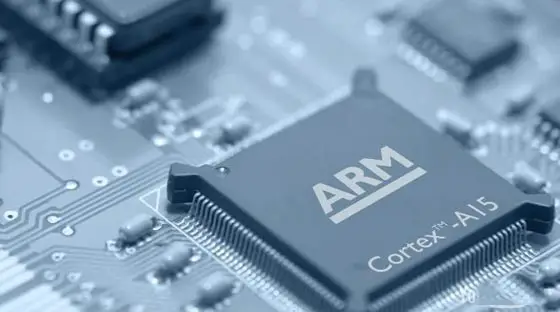In this post we will finish the explanation of the different types of processors found in mobile devices. In the first part, we saw what an ARM processor is. We also saw that there are different architectures (for example ARMv5, ARMv6, ARMv7), each one better than the previous. Finally, we mentioned that each architecture has different processor families.
As if things weren’t complicated enough already, now is when the really complicated part comes.
ARM licenses, that is, authorizes other companies to design and/or manufacture chips based on their architectures. To put it more clearly, it’s similar to what happens when building a building. First, an organization publishes regulations that all buildings must comply with (similar to processor architectures). Then an architect designs a specific building (similar to designing a family of processors). Finally, a builder physically constructs a building (similar to manufacturing a processor).
For example, the processors called “A4” in the iPhone 4 are actually ARMv7 architecture processors, designed by Intrinsity with Cortex A8 design, and manufactured by Samsung (until 2011, then by Taiwan Semiconductor Manufacturing Company).
They have really complicated it, haven’t they? Well, let’s try to simplify it a bit. Below is a table with the main processors that we can find, and some indicative characteristics. The complete list of processors can be found here.
| Family | Architecture | Cores | Speed | Efficiency | Examples |
|---|---|---|---|---|---|
| ARM9E | ARMv5 | ARM946E-S, ARM926EJ-S … | 180-800 | 0.6-0.8 | HP50G Calculator, Tomtom Browsers, Nintendo DS |
| ARM10E | ARMv5 | ARM1020E, ARM1026EJ-S … | - | - | - |
| XSCALE | ARMv5 | IOP321, PXA3XX … | 400-1000 | 0.8-1 | HP iPaq 614c, Omnia, Palm Tungsten T3 and TX |
| ARM11 | ARMv6 | ARM1136J … | 400-1000 | 1.2 | iPhone 3G, Omnia II, Nokia N97, HTC Dream |
| Cortex | ARMv7 | Cortex A5 | 600-1000 | 1.5 | |
| Cortex A8 | 600-1000 | 2 | iPhone 3GS, iPad, iPhone 4, Palm Pre, Omnia HD, Galaxy S | ||
| Qualcomm Scorpion | 1000-1500 | 2 | HTC Desire, Nexus One, HTC Incredible | ||
| Cortex A9 | 1000-1500 | 2.5 | |||
| Cortex A9 Multi-core (2 to 4) | 1000-1500 | 2.5 | Galaxy S II, iPhone 4S, iPad 2, Nvidia Tegra 2 devices |
We can see that the best processors are the Cortex A9 and multi-core A9, and Tegra 2. Cortex A8 is also very acceptable, similar to a Samsung Galaxy. ARM11 is mediocre, similar to XSCALE (technology from 10 years ago). On the other hand, ARM9 are the worst of all, with power similar to that of a TomTom browser.
With this in mind, we are finally able to solve the example posed in the previous post. The results are found in the following table.
| Device | Processor | Architecture | Family | Price | Classification |
|---|---|---|---|---|---|
| Bq Voltaire Tablet 7” | Arm 926 EJ-S 600MHz | ARMv5 | ARM9E | 94 € | Scam |
| Yarquin 7” | Telechips TCC8902 ARM11 | ARMv6 | ARM11 | 98 € | Mediocre |
| Bq Pascal Lite 7” | Cortex A8 1GHz | ARMv7 | Cortex A8 | 98 € | Bargain |
Finally, as we said in the first post, there are much worse cases. For example, the Papyre Pad 7.1, with an ARMv5 processor, ARM9E family, at 600Mhz, is sold for 125€. This difference also occurs in mobile phones. For example, the Samsung Galaxy Mini, which has an undeserved good reputation, has an ARMv6 processor, Qualcomm MSM7227 family at 600 MHz, which is currently obsolete and therefore offers a poor experience to the user.
It’s worth asking and spending some time finding out what type of processor a device has, not just the speed. The difference in processors means the difference between a smooth and pleasant user experience, and one that is disappointing and frustrating for its owner, and can be abysmal and not necessarily correspond to the price.
